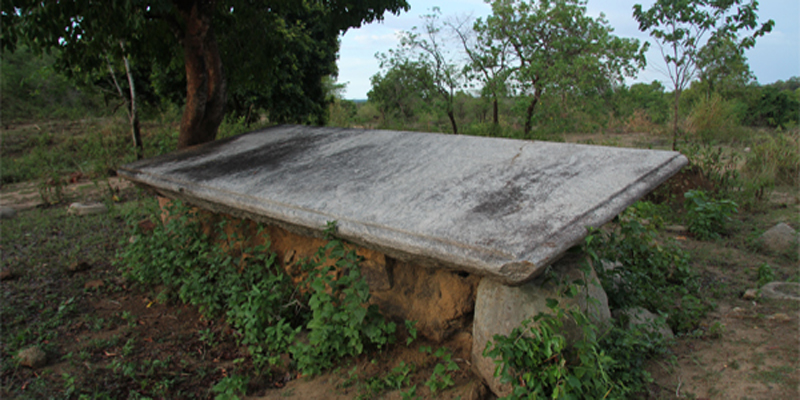The road to Pulkunawa village falls through the ruins of once a vast monastery built by a yet to be identified donor for an Arhant in the name of Pussadeva.The monastery grounds with its abundance of stone pillars of simple beauty and grace speaks of extensive construction done throughout the centuries starting from the late first century BC. The ruins scattered at the foot of the mountain consist mainly of constructions, that are in the front of the monastery including preaching halls, alms hall, pilgrim houses and intricately carved stone stairways leading to the top of the mountain.
The Buddha statues in shrine rooms had long been vandalized in search of treasure while the simply adorned stairways had been removed elsewhere. A further up the mountain a ruined stupa believed to be enshrining the remaining of Arhant Pussadeva stands next to a pond improvised to store rain water for the use of the monastery. Adjoining the pond and the stupa lay more ruins of monastery buildings scattered disorganized anduninvestigated. From this second tier of the mountain a six hundred feet stone stairway leads the way up to the mountain, where lies the drip ledged caves for the meditating Bikkhus. The inscriptions carved inside the caves speak of the Arhant Pussadeva, who was well versed in AnguttaraNikaya, a paliverse canon. However missing are the details of the illustrious donors, who had been the builders of the monasteries in East. Pulukunawa or Weheragala had been a more of a poor man’s monastery with its main patron being an accountant in the service of the ruler of East.


